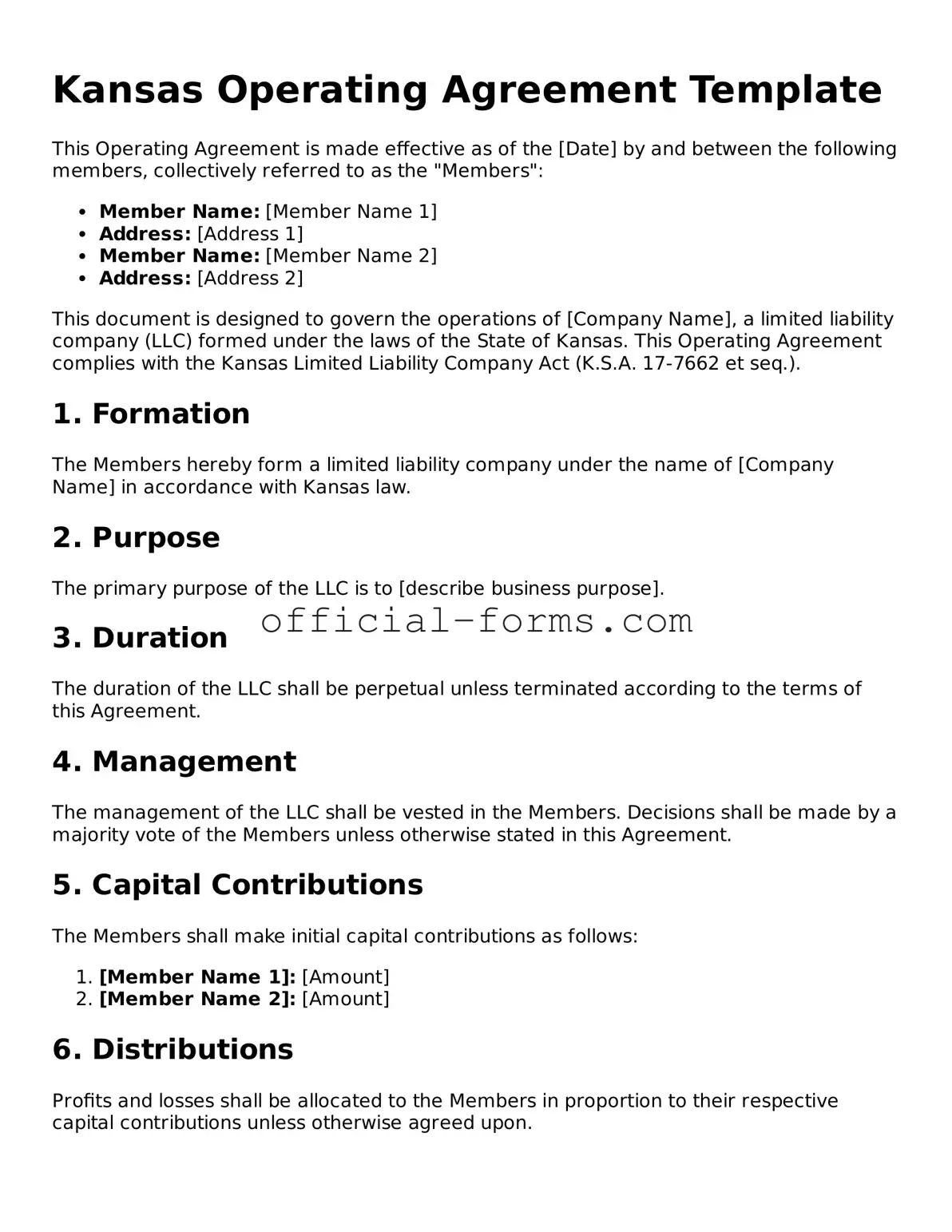Official Kansas Operating Agreement Document
The Kansas Operating Agreement form is a legal document that outlines the management structure and operating procedures of a limited liability company (LLC) in Kansas. This agreement is essential for establishing clear roles and responsibilities among members, as well as detailing how the company will conduct its business. Understanding this form can help ensure that your LLC operates smoothly and in accordance with state laws.
Open My Operating Agreement Now
